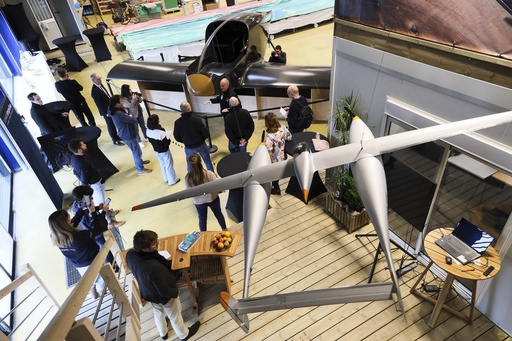
LES SABLES D’OLONNE, France — Aviation trailblazer Bertrand Piccard, known for his remarkable around-the-world trip in a solar-powered plane a decade ago, is now setting his sights on greener air transportation. Emerging from his workshop on France’s Atlantic coast, the 66-year-old Swiss adventurer is leading a new initiative called Climate Impulse, designed to introduce commercial flight using super-cooled liquid hydrogen. This ambitious project began in February and is aimed at flying a two-seat aircraft non-stop around the globe in nine days, powered by hydrogen generated from water through a renewable-electricity-based process known as electrolysis.
Backed by major industry players like Airbus and Syensqo, a science incubator with ties to Belgian pharmaceutical giant Solvay, the Climate Impulse team recently outlined its initial achievements to the media in Les Sables d’Olonne, a seaside town famed for hosting the Vendee Globe sailing race.
Future plans include launching test flights next year, with the round-the-world mission projected for 2028. The innovative aircraft made from lightweight composite materials relies on several untested technologies, making its success uncertain. Piccard remarked on the challenges of convincing a major aircraft manufacturer to take the risk of building such a prototype. He stated, “It’s my job to be a pioneer. We have to demonstrate that it’s feasible, which will encourage others to follow.”
While the initiative is generating tens of millions of euros in investments and growing its workforce, experts caution that green hydrogen as a sustainable aviation fuel remains decades away from commercialization. The solar-powered aircraft that circumnavigated the globe a decade ago demonstrated unique technological capabilities, but it wasn’t scalable for commercial use. According to Raphael Dinelli, a co-pilot and engineer with Climate Impulse, to accommodate 100 passengers, a modified version of the solar plane would require solar wings as long as 300 meters, highlighting the significant limitations of that earlier design.
The Climate Impulse mission envisions a flight of approximately 40,000 kilometers (around 25,000 miles) around the Equator at a cruising speed of about 200 kilometers per hour (125 mph), with the aim of taking off, flying, and landing without any mid-air refueling stops.
The aircraft is set to utilize liquid hydrogen stored in ultra-insulated tanks beneath its wings, which will convert into gas during flight—similar to steam engines that operated using pressurized water vapor in the 19th century. Instead of utilizing mechanical operations, this process relies on energy generated from the hydrogen that activates a fuel cell, subsequently providing power to the plane. The only emission produced by the flight will be water vapor, although experts point out that the environmental impact of water vapor contrails in large-scale scenarios is yet to be fully understood.
Amidst global efforts to find alternatives to carbon-based fuels in aviation, the International Energy Agency attributes around 2% of worldwide carbon dioxide emissions to air travel. Although hydrogen has been employed in aviation for years, its application has primarily been as a gas, and transitioning to liquid hydrogen will require significant advancements. Currently, fossil fuels are the primary source of hydrogen production, as the world lacks enough renewable electricity capacity to support widespread hydrogen use for aviation.
The Climate Impulse team has made notable strides in the past year by constructing the cockpit shell, initiating the wing spar build, and finalizing the interior design, which features rotating seats and a stationary bike for co-pilots to maintain blood circulation during the lengthy flight duration. Yet, significant challenges lie ahead, including testing the fuel cells and propulsion systems to ensure the electric motor, propeller, and batteries function effectively for a fully electric flight phase.
One of the project’s toughest hurdles involves regulating the flow of liquid hydrogen to maximize efficiency for long-range travel. Additionally, maintaining the liquid hydrogen at a temperature of nearly absolute zero is vital, as constructing a leak-proof tank is crucial to prevent catastrophic consequences, given the flammable nature of hydrogen.
Liquid hydrogen, while often associated with powering rockets, is also emerging as a possible solution for aviation’s future. Airbus has signaled its intent to pave the way for low-carbon commercial planes by 2035, estimating that hydrogen could reduce aviation-related carbon emissions by half. However, experts contend that the aviation sector has not yet experienced a transformative moment akin to the electric vehicle boom, with hydrogen presenting the potential to fill that niche.
As the field develops, it is important to consider the weight challenges posed by batteries, which are critical for electric vehicles but even more so for aircraft. Employing super-cooled liquid hydrogen poses additional complexities, and experts emphasize that current technology only allows for short-duration usage, whereas this initiative aims for sustained operation.

